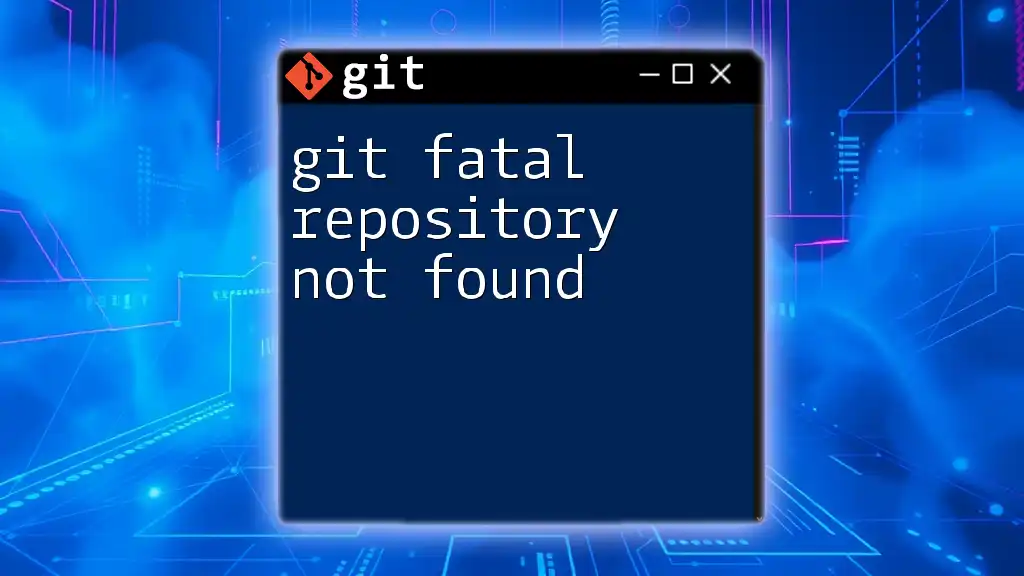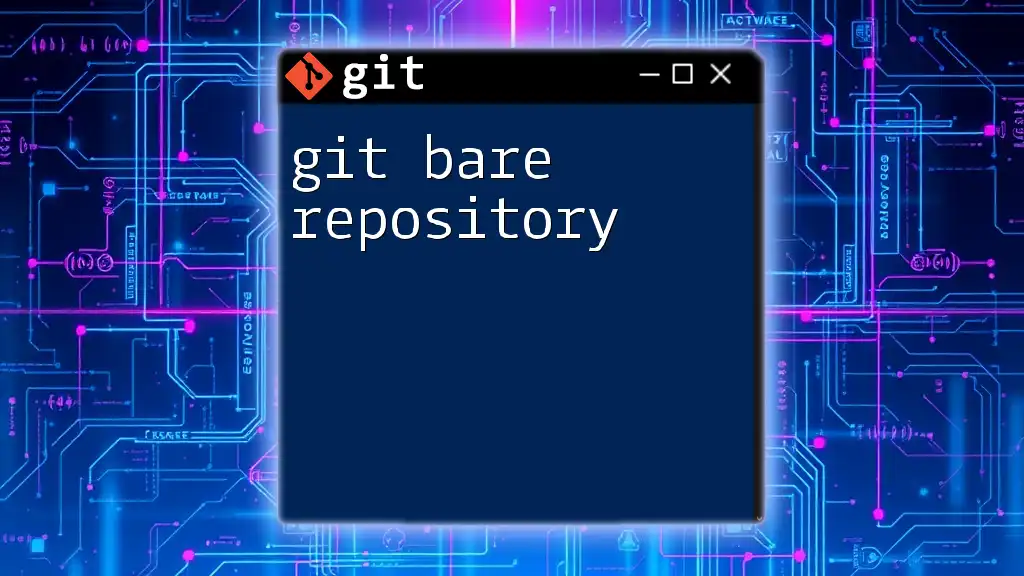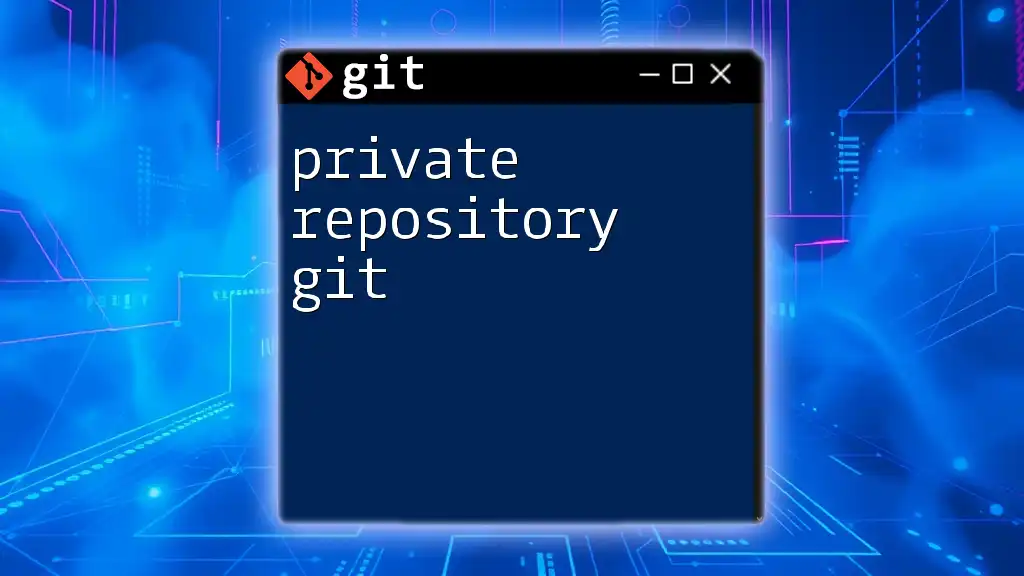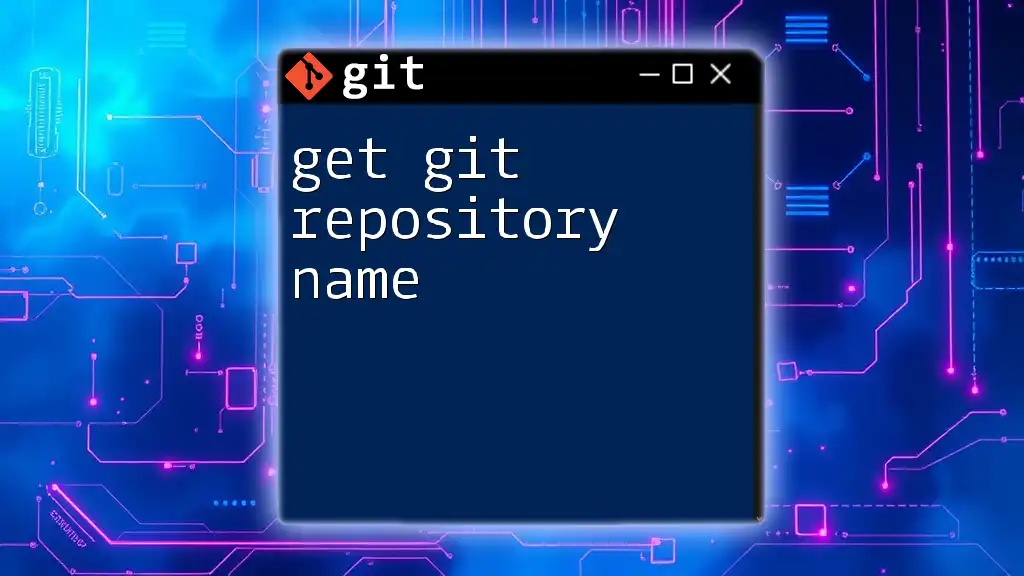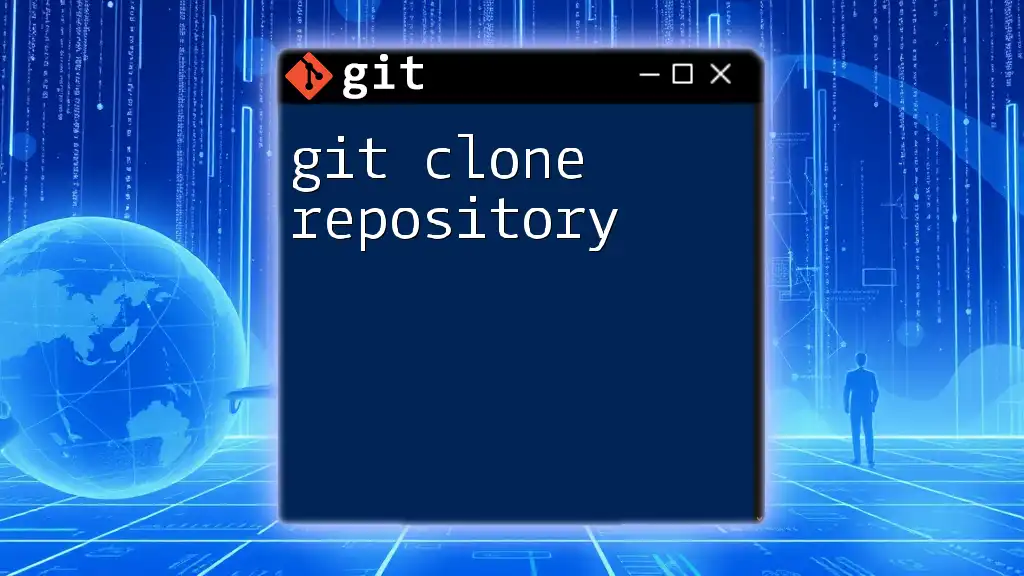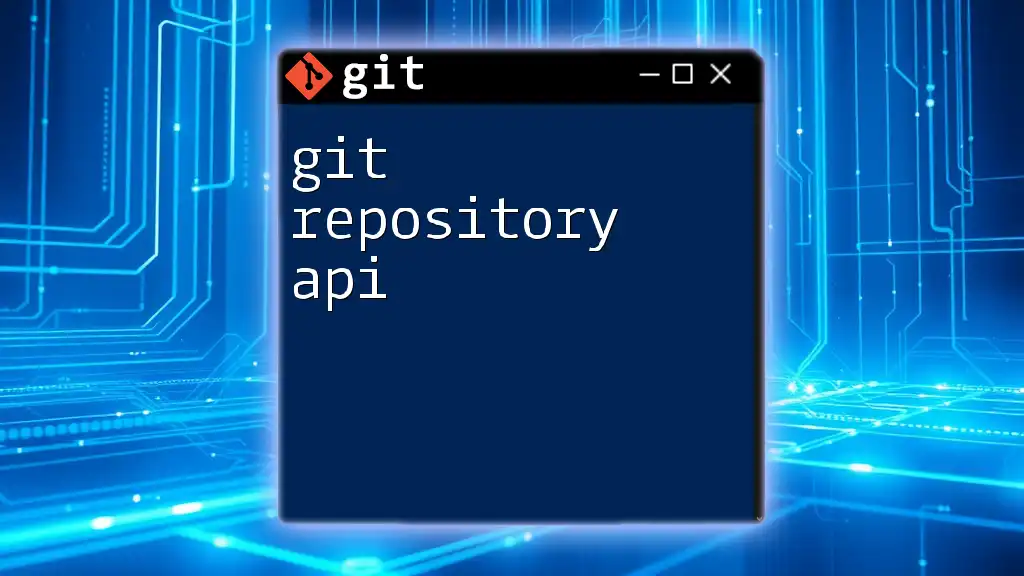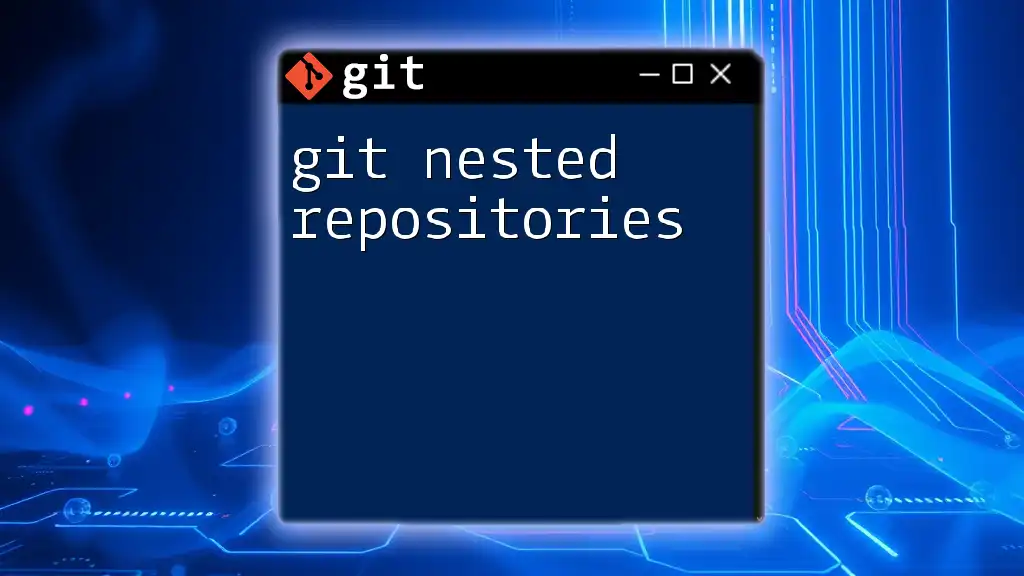The error "git fatal: repository not found" typically occurs when the specified repository URL is incorrect or the repository does not exist on the remote server, often due to typos or lack of access permissions.
Here's an example of how you might encounter this error:
git clone https://github.com/username/nonexistent-repo.git
Understanding the 'Git Fatal Repository Not Found' Error
What is a Git Repository?
A Git repository is a structured storage location where Git tracks changes to your project files over time. Each repository enables individuals or teams to manage revisions, collaborate, and maintain the history of their codebase. The importance of repositories in version control cannot be overstated, as they are fundamental to collaborating efficiently and effectively in software development environments.
What Does 'Fatal Repository Not Found' Mean?
The error message "fatal: repository not found" typically indicates that Git cannot locate the specified repository, either locally or remotely. It often appears during operations like `git clone`, `git fetch`, `git pull`, or `git push`, signifying that the command you executed is trying to interact with a non-existent or incorrectly specified repository.
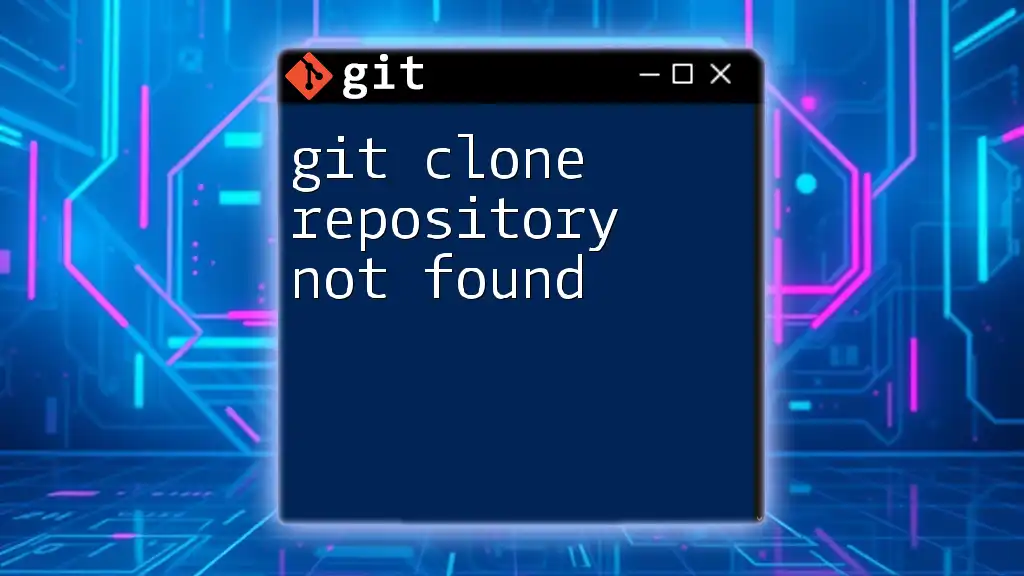
Common Causes of the Error
Incorrect Repository URL
One of the most frequent reasons for encountering the git fatal repository not found error is an incorrect repository URL. To address this:
-
Check the URL: Verify that the URL you are using is correct. Ensure that it includes the proper path to the repository.
-
Common Formatting Mistakes: Be mindful of issues such as missing file extensions (e.g., ensure it ends with `.git`), incorrect casing (Git URLs are often case-sensitive), and typos.
For example, the incorrect URL might look like this:
git clone https://github.com/user/repo.gitYou might mistakenly drop `.git`:
git clone https://github.com/user/repoCorrect this by adding `.git` to the end:
git clone https://github.com/user/repo.git
Missing Repository on Remote Server
Another common cause is that the repository may not exist on the remote server.
- It’s essential to verify whether the repository was created. If it is missing, you can create a new repository directly through platforms like GitHub, GitLab, or Bitbucket.
- You can log into your account on the respective platform to verify that the repository is indeed there, checking your list of repositories.
Authentication Issues
Access rights can also lead to the git fatal repository not found error.
- Ensure you have the proper permissions to access the repository. If you're using HTTPS, you may need username and password credentials; if using SSH, ensure your SSH keys are correctly set up.
- Check if you have proper access by attempting a command like:
If you encounter authentication errors, you may need to update your credentials or regenerate your SSH keys.git pull
Local Repository Misconfiguration
The local Git repository may be misconfigured.
- Understanding Local Repositories: A local repository is a clone of a remote repository stored on your computer. If the configuration is off, you might not be able to interact successfully with the remote server.
- Check Local Setup: You can inspect your current configuration and verify the remote URL with:
This will list the remote repositories associated with your local repository. Ensure that it points to the correct URL.git remote -v
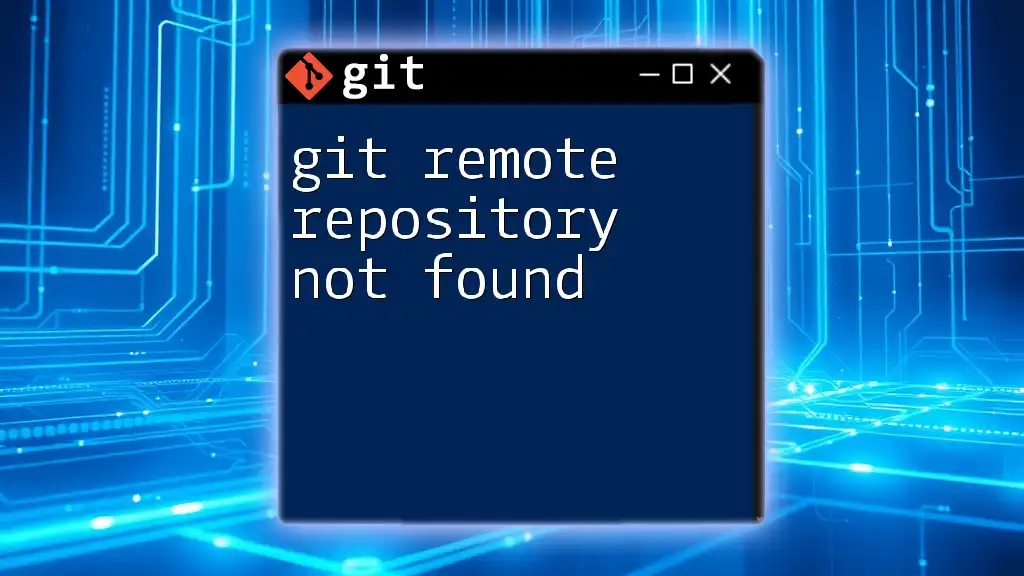
Troubleshooting the Error
Confirming the Repository URL
To confirm and possibly reset the repository URL:
- Recheck the URL: Always double-check the URL to make sure there are no typographical errors.
- Set the Correct URL: If you find that the URL is incorrect, reset it using:
git remote set-url origin <new-repo-url>
Verifying Remote Repository Status
Confirm that the remote repository exists and is accessible:
- Employ the following command to check the repository’s status:
This command should return references for the repository; if it returns an error or nothing, it heavily suggests the repository is either inaccessible or doesn’t exist.git ls-remote <repo-url>
Ensuring Proper Authentication
To ensure your credentials are correct:
- Revalidate your authentication. For HTTPS users, update credentials; for SSH users, check that your SSH keys are added to your SSH agent. You can do this by confirming with:
Successful authentication will return a welcome message.ssh -T git@github.com
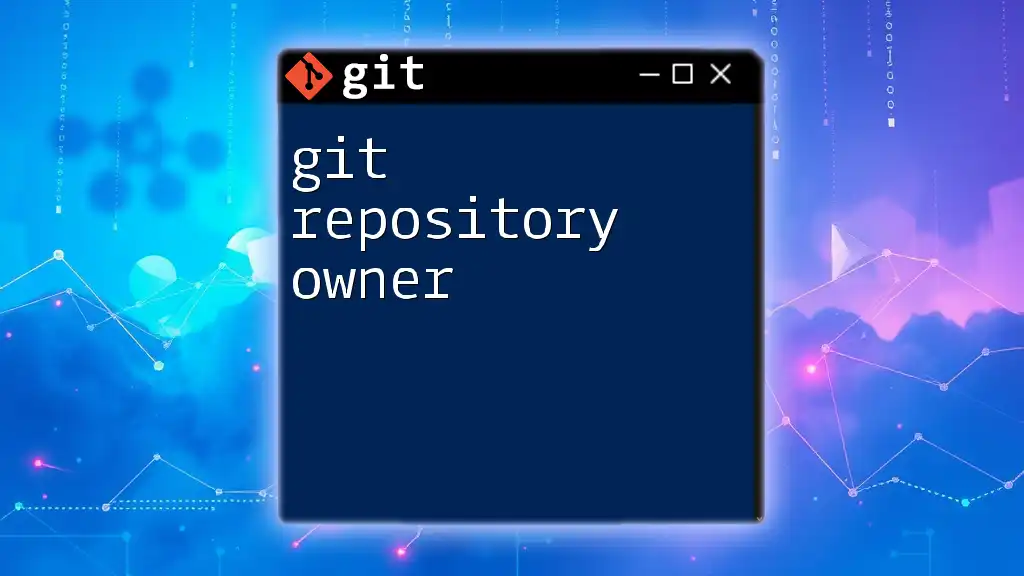
Fixing the Error
Step-by-Step Solutions
Addressing the git fatal repository not found error involves clearly identifying the source of the issue:
- Check and update the repository URL: Start here, making sure the address is accurate.
- Confirm repository existence on platforms like GitHub or GitLab.
- Validate your authentication: Make necessary updates to your credentials or SSH configurations.
Preventing Future Occurrences
To minimize the likelihood of encountering this error again, keep the following best practices in mind:
- Use a reliable URL: Always double-check your URLs before pulling, pushing, or cloning.
- Document repository setups: Keeping records of repository URLs and access details can save time.
- Ensure proper permissions: Apply the principle of least privilege when granting access to your repositories, so you’re not constantly troubleshooting access rights.
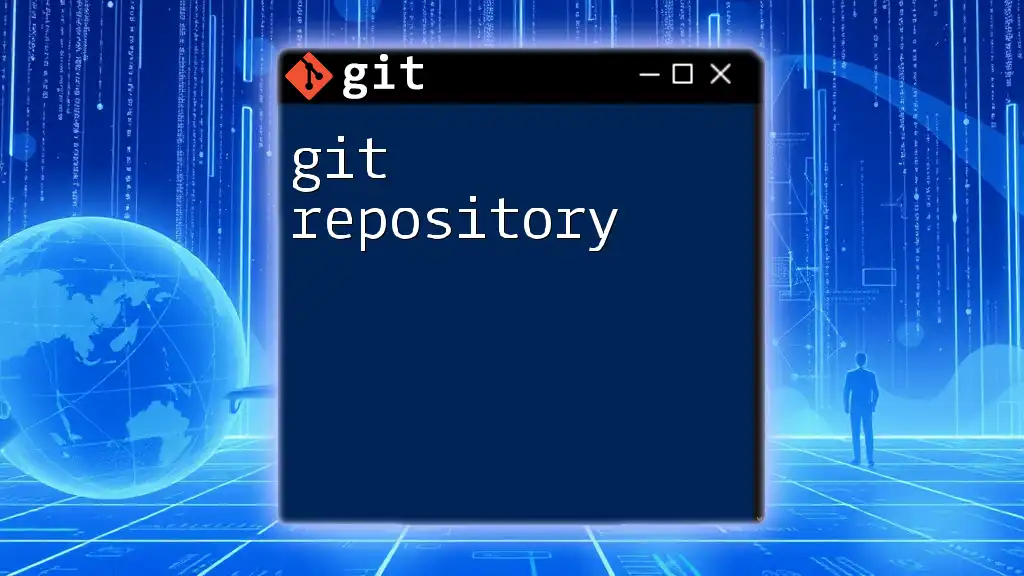
Conclusion
Recap of Key Points
In summary, the git fatal repository not found error can stem from a variety of causes, including incorrect URLs, missing repositories, authentication problems, and local misconfigurations. By following the troubleshooting steps outlined, you can effectively diagnose and repair this error.
Moving Forward with Git
Continue enhancing your Git skills with consistent practice and exploration of more complex commands. The world of version control offers endless learning opportunities, so embrace it!
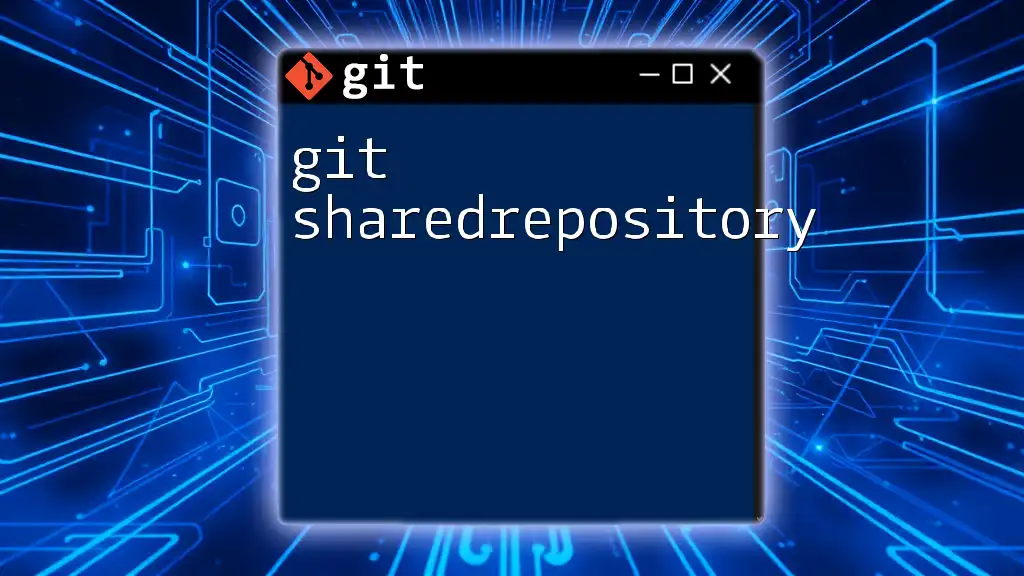
Additional Resources
Recommended Tools and References
To further your knowledge and troubleshoot effectively, explore the following resources:
- Official Git documentation for comprehensive command references.
- Third-party Git GUI tools for an alternative approach to managing repositories.
- Relevant blog posts or tutorials that delve into advanced Git topics and use cases.

